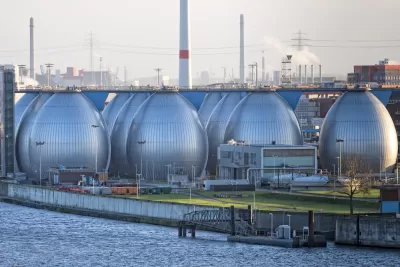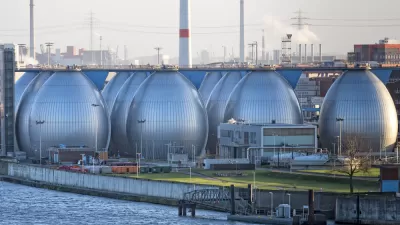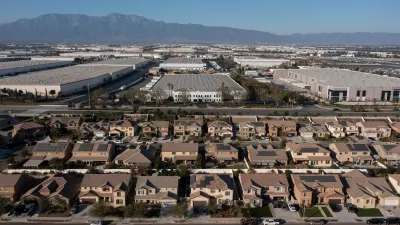The plants provide much-needed fresh water, but the environmental costs are immense.

Tik Root reports on a new study in the journal Science of the Total Environment about the outputs of desalination plants:
The literature had long assumed a one-to-one ratio. But [Manzoor] Qadir’s study found that the average desalination plant actually produced 1.5 times more brine than desalinated water—fifty percent more than previously thought. That translates to 51.8 billion cubic meters of brine each year, which Qadir says is enough to cover all of Florida, a foot deep.
Root notes that 16,000 plants are currently in operation or under construction around the world. The facilities are costly to operate, require large amounts of energy, and produce significant emissions. But the brine especially concerns scientists because of the effects of the salinity and temperature of the water and because copper and chlorine used during desalination ends up in the discharge.
Some observers believe that the brine is not a huge problem because it can be disposed of safely, but others say the problem runs deeper. "[John] Burt adds that while regulation can help mitigate these risks, enforcement varies widely from place to place. And, in the Arabian Gulf, where nearly half of the world’s desalination occurs, he says oversight tends to be relatively weak," writes Root.
FULL STORY: Desalination plants produce more waste brine than thought

Trump Administration Could Effectively End Housing Voucher Program
Federal officials are eyeing major cuts to the Section 8 program that helps millions of low-income households pay rent.

Planetizen Federal Action Tracker
A weekly monitor of how Trump’s orders and actions are impacting planners and planning in America.

Ken Jennings Launches Transit Web Series
The Jeopardy champ wants you to ride public transit.

Crime Continues to Drop on Philly, San Francisco Transit Systems
SEPTA and BART both saw significant declines in violent crime in the first quarter of 2025.

How South LA Green Spaces Power Community Health and Hope
Green spaces like South L.A. Wetlands Park are helping South Los Angeles residents promote healthy lifestyles, build community, and advocate for improvements that reflect local needs in historically underserved neighborhoods.

Sacramento Plans ‘Quick-Build’ Road Safety Projects
The city wants to accelerate small-scale safety improvements that use low-cost equipment to make an impact at dangerous intersections.
Urban Design for Planners 1: Software Tools
This six-course series explores essential urban design concepts using open source software and equips planners with the tools they need to participate fully in the urban design process.
Planning for Universal Design
Learn the tools for implementing Universal Design in planning regulations.
Heyer Gruel & Associates PA
Ada County Highway District
Institute for Housing and Urban Development Studies (IHS)
City of Grandview
Harvard GSD Executive Education
Toledo-Lucas County Plan Commissions
Salt Lake City
NYU Wagner Graduate School of Public Service





























